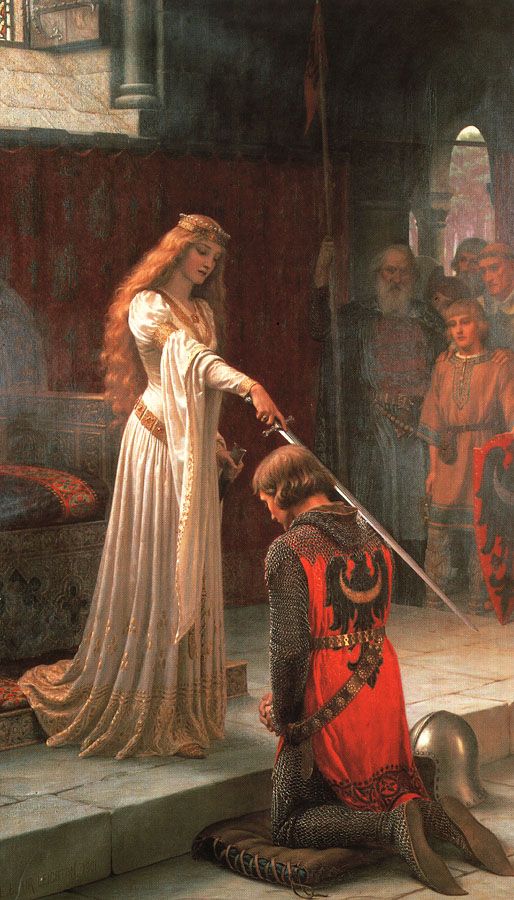
"A knight should be bold, fair, courteous and
-Durmart



well-mannered, generous and loyal, not foolish or
rash, and should speak fairly without discourtesy.
A knight should be all this, and also proud and fierce
to his enemies, and kind to his friends."

Origins of Chivalry
The most likely image to spring to mind at the mention of the word 'chivalry' today, is one of the perfect
gentleman, an impeccably mannered individual who displays gentle and courteous behavior, especially
towards women. Combing our way through history in search of beginnings of this social code, we may trace
it back to the Middle Ages. This was an era which nurtured the ascendancy of a mail-clad cavalry, at first
a simple military force, yet later evolved into a powerful fraternity espousing the principles of honorable
and gallant behavior.The word 'chivalry' has its earliest roots in the French word for horse, cheval, and a knight in that same
language is called chevalier, the ambassador of la chevalerie (chivalry). Many historians consider knighthood
and chivalry to mean one and the same thing. Originally, however, the chevalier was simply a horseman
equipped with lance and sword for battle, a barbaric descendant of the Germanic Goths who raided and
invaded the Roman Empire from the third to the fifth centuries. As time progressed, the knights image grew
in sophistication, and by the end of the eleventh century knighthood had come to denote a person of noble
birth, often possessing property, whose responsibility it was to uphold certain religious, moral and social
systems.No one can assign a precise date to the birth of chivalry, but it is generally agreed that it was at its height
between the eleventh and thirteenth centuries, falling into decadence and decline during the fourteenth,
ultimately to become a subject of unbridled farce in the fifteenth century.Chivalry's importance to the evolution of Western civilization is sharply divided by critics. Some have called
it 'the most glorious institution that man himself ever devised', and 'the splendid institution which threw its
luster over so many ages of gloom and anarchy'. Others, however, condemn its glorification of war for its own
sake, its contempt for social inferiors, and its 'picturesque mimicry of high sentiment, heroism, love and
courtesy.'This site neither challenges nor defends these arguements. Its simple purpose is to provide information to the
subject of chivalry, knighthood and medieval history of an institution which flourished magnificently for a brief
period only, yet whose influence lives on today.


Aaron Neilson
a n @ m i c r o n . n e t URL: https://members.tripod.com/~aaron_neilson/intro.html